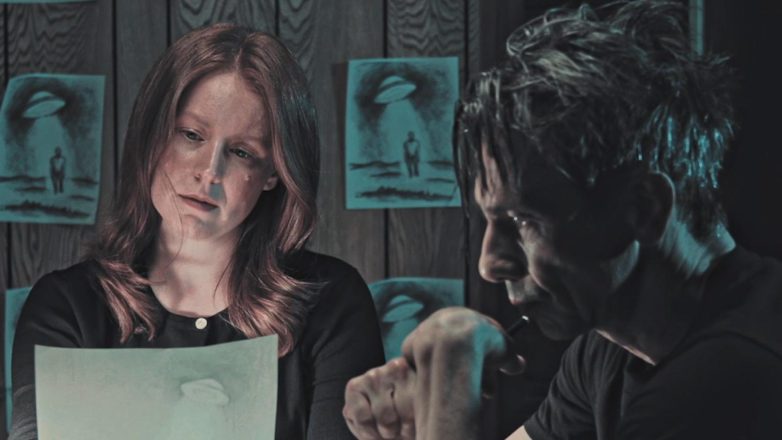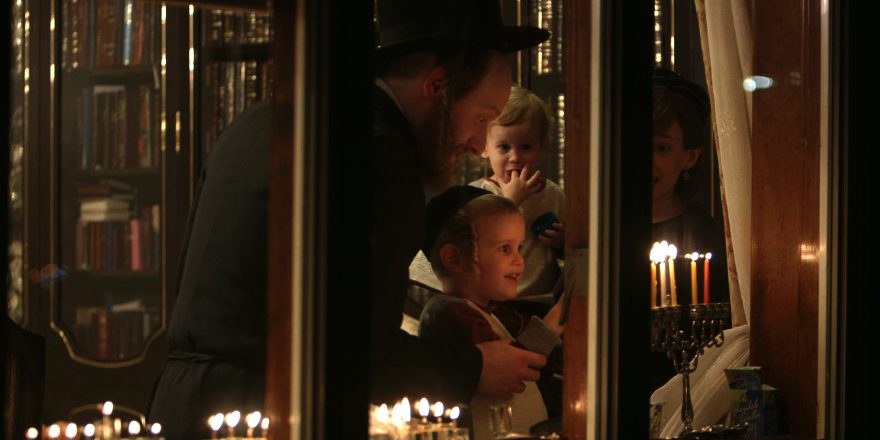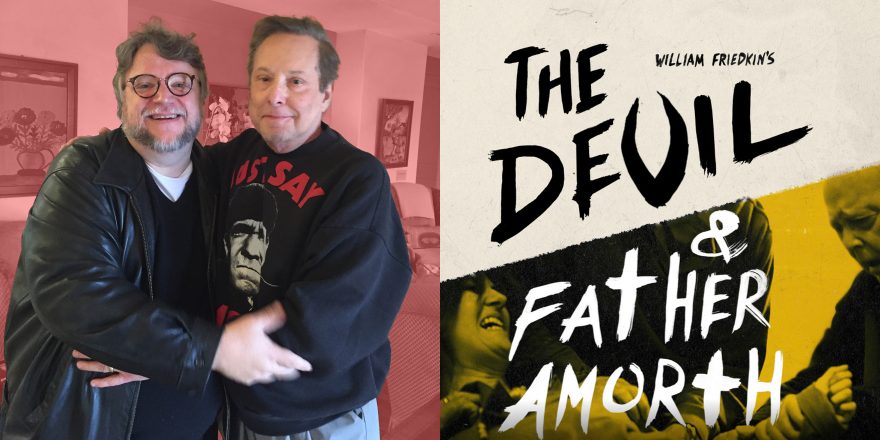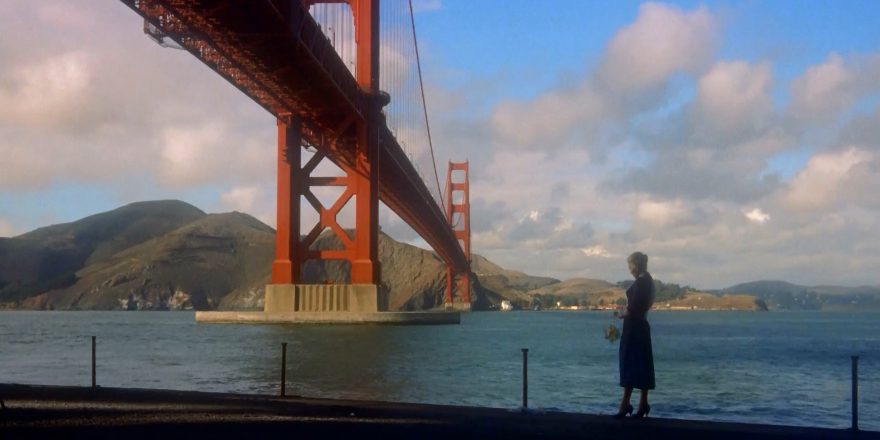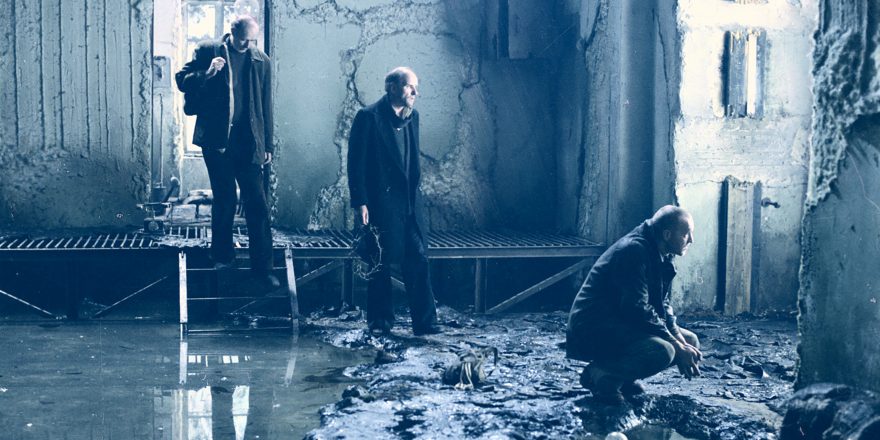It’s hard to remember the first time I saw an image move across a screen. I was probably nine years old, and my brothers and I had become obsessed with our Flip Video digital camera. We began filming an air purifier machine, which we pretended was a robot voiced by my older brother. Unbeknownst to me, we were accidentally making a movie, which we called Robeto, after the main character’s name. At first, we edited in-camera and then started editing on a 30-day free trial editing software we took out of the local library. The editor came with some “stock footage,” including a scene from a strange-looking flick called Vertigo. This was one of the first moving images I’d seen outside of the primitive religious Orthodox home entertainment. It was the sequence when James Stewart tails Kim Novak in his car to the flower shop. I watched these five minutes of James Stewart driving many hundreds of times. I became addicted. Jimmy Stewart behind the wheel, zero context, on repeat. It didn’t matter to me what it meant; I just knew it was special. This early flirtation with cinema held the key to a philosophy of interfacing with movies and the arts that remains with me to this day.
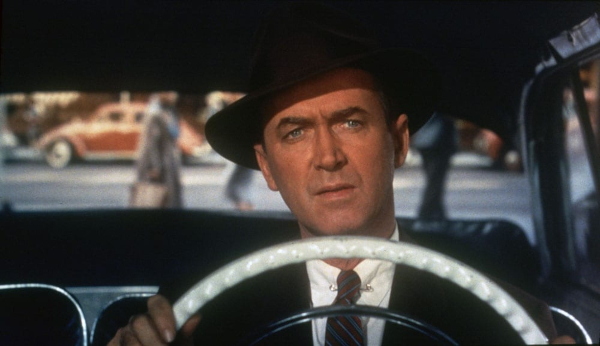
It’s nice to dream of attack ships on fire over the shoulder of Orion, imagining move-for-move lightsaber duels with Sith lords, and saloon gunfights, but every dream comes to an end, and reality sets in. I was a kid growing up in Flatbush, from a proud family of Rabbinic scholars. My namesake and maternal great-grandfather, Rabbi Tzvi Hersh Schwadron, was a Talmudic scholar who was murdered in the Lviv liquidation. His father, known by the acronym the “Maharsham,” was the leading Rabbinic authority in Eastern Europe. My father’s namesake and great-grandfather was the author of the most popular Jewish legal work in the 20st century, Rabbi Solomon Ganzfried. I was deeply proud and still am to descend from such brilliant minds who dedicated their lives to the well-being of their communities. By 13, I’d become engrossed in theological studies. In 7th grade, I wrote my first “essay” on the first verse of Genesis, which was met with laughter and taunts by my classmates. (In religious school, the focus was Jewish law versus more mystically bent literature.) I went to my mentor, who was a genius Talmudist; he was tall, thin, with oval glasses and a greying beard, and had an Albus Dumbledore air to him. I was on the verge of tears. He gazed up at the ceiling of the study hall, eyebrows contracting into a frown, and exclaimed in gentle yet commanding voice, “Most people care more about the flavor of their ice cream than how the world came into being.”
By 14, I was studying both Jewish law and theology seven to 10 hours per day. My main study partner at the time was Meshulem Jungries (to whom I dedicated my film Killer of Men, after his tragic early passing at 19). We both slipped away into the labyrinthine of 1,500-year-old Aramaic texts of the Talmud, cutting our teeth on idiosyncratic thought experiments. The Talmud was also filled with stories that are what I like to call “ancient surrealism.” Moses travels into the future and sees Roman-era sage Rabbi Akiva’s decapitated corpse in the marketplace and demands God explain why he makes the righteous suffer. A Rabbi steals the knife of the Grim Reaper to prevent him from killing, or a seven-headed demon occupies a temple.

Simultaneous to my immersion in theology was my obsession with the image that moves across the face of the magic box. In 8th grade, a friend smuggled me a DVD of The Dark Knight, an act — if we’d been caught red-handed — which would’ve gotten us both suspended from school, until we proved our repentance. I saw the film on a DVD player in the bathroom with the volume turned off, afraid my folks might hear. (Maybe that’s where my love for dialogue-less movies came from.) I didn’t fully get the film by watching it silent, but it didn’t matter. It was like theology and the Talmud; I experienced them, I didn’t study them. Tales to me are like archaeology, or in David Lynch’s Twin Peaks, they come from the hidden purple ocean of the unconscious. We all draw from the purple ocean; ideas aren’t new, they are realities we catch glimpses of, that we discover. Stories or movies are preexisting material we stumble upon, like ants who find the crumbs of a roadside picnic. We don’t fully comprehend them; sometimes we only get one puzzle piece from the “other room”(as Maestro Lynch eloquently explains), and sometimes a few dozen. Only on rare occasions do we get them all.
Tarkovsky said it best: “An image cannot be a symbol in my opinion. Whenever an image is turned into a symbol, the thought becomes walled in so to speak, it can be fully deciphered. That’s not what image is. A symbol is not yet an image. Although image cannot be explained, it expresses truth to the end… Its meaning remains unknown. I was asked once what the bird on boy’s head in Mirror meant. But any time I attempt to explain, I notice everything loses its meaning, it acquires a completely different sense than intended, moves away from its rightful place. I could only say a bird would not come to an evil man but that’s not good enough. A true image is an abstraction, it cannot be explained, it only transmits truth and one can only comprehend it in one’s own heart.”
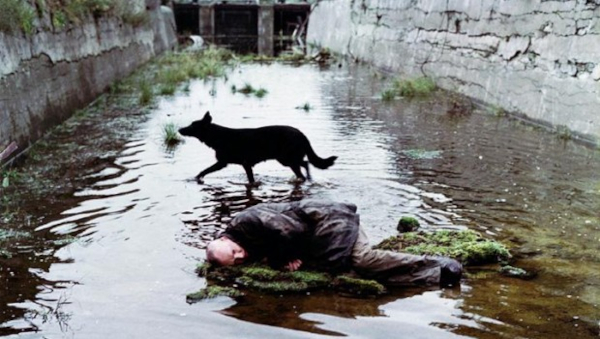
I didn’t fall in love with Star Wars for the myriad of cockamamie reasons put forward by “Star Wars scholars.” I liked Star Wars because it was fucking Star Wars. No words can do justice to the power of the yarn, from when man first spun them on the walls of a cave to Hideo Kojima’s Metal Gear. The magic lies in the little 10-year-old watching five minutes of Vertigo on repeat on a 30-day free trial of movie editing software.
William Carlos Williams said, “There are no ideas but in things.” Even before mankind knew that the starry sky was comprised of planets, solar systems and galaxies, before it was able to be intellectualized, they were still united under its mind-bending canopy. (It was the first IMAX screen.) And most of us still buckle under its grandeur, without possessing the knowledge of astronomers. The beauty of this glittering canvas is in the glittering canvas itself. We don’t go to the movies for some Easter egg or an image of a rich gluttonous man juxtaposed with a crucifix looming behind him. The cinema is the Tramp’s face when the flower girl finally can see, the dog trotting across the puddle beside the prone Stalker, when all sound goes and Leon falls to the floor of the apartment building. Cinema is Darth Vader removing his mask for the first time as he dies on the Death Star’s floor, the prostitute Cabiria walking alone down a country road and suddenly being serenaded by a group of young children singing and dancing, until a single tear falls out of her eye.
My blessed grandfather, who lived through World War II on the run, hiding from the Nazis in barns and abandoned houses, and made it to America, where he studied under the great theologian Abraham Joshua Heschel, frequently grappled with the following question when I was a kid: “Why do the righteous suffer? Why do good people die young and of terrible diseases?” This is a question posed by a man who lost most of his family to the Holocaust. He then would read to me from a psalm of the Sons of Korach, who lamented over the cruel suffering the righteous endure in this life. At the end of the heart-wrenching psalm, they enter the City of God and talk of its awe-inspiring and fear-inducing beauty. How does beholding the proverbial temple solve the suffering of the righteous?
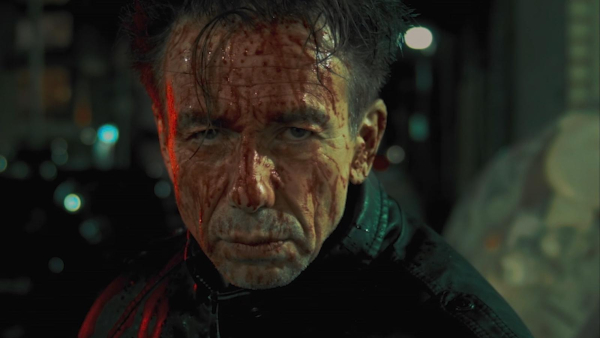
In my own words, my grandfather would explain, it was in the “experience” of beholding the inner chambers of God, it was in seeing the wonders, that all was understood. An experiential understanding that defies words. Terrence Malick’s magnum opus, The Tree of Life, literally illustrates this when the grieving mother (Jessica Chastain) screams at the heavens, asking why they took her son away. Instead of the voice of Morgan Freeman giving us a digestible, trite reply, that pain makes us strong or what have you, Malick takes us to the beginning of time, to the creation of the universe. No answer in the human tongue can quell the grieving mother’s questions and sorrows, only a moving image can.
So, I guess if I can impart some perspective from my personal journey of appreciating the image that traverses across the face of the magic box, I’d say: feeling over understanding, experiencing over intellectualizing. If we can let go and try to simply witness the splendor, we might just be able to enter the City of God.


